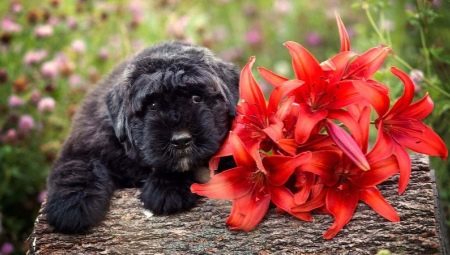Among a wide variety of dog breeds, there are species that owe their appearance to natural selection. The Flanders Bouvier breed, which today is popular with breeders not only in Europe, but also in Russia, will be interesting in terms of exterior and behavioral qualities.
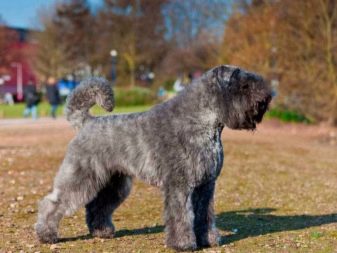
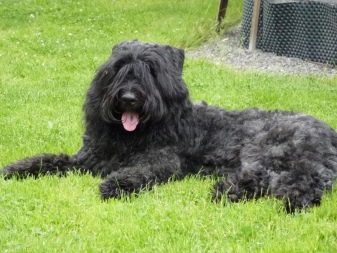
Characteristic
The breed, in addition to the main name, due to the exterior and past of its representatives, is called several more options. So, dogs are sometimes called "cattle herders", "dirty beard", "Belgian bears", "cow dogs", "Flanders shepherd." In Europe, animals have become more widespread, and in the post-Soviet space such tetrapods are still rare among breeders.
One of the versions of the emergence of Flanders shepherds is considered natural, independent selection. The formation of the breed occurred naturally in the light of climatic features and the main tasks that Bouvier had previously performed. Dogs were initially kept mainly in farms for the protection of cattle, drag and drop, performed security functions. In the light of such living conditions, the coat of dogs has become tougher, the animals have a dense undercoat, as well as a mustache and beard, which performed protective functions.
In addition, there is information that animals with a similar exterior were specially bred by people, namely monks in the XII century.
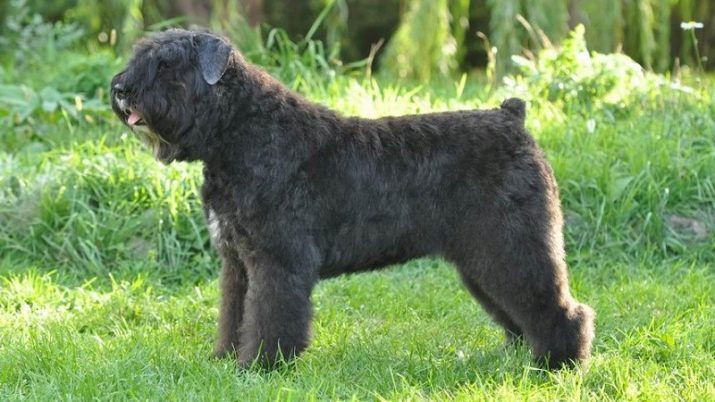
The breed received official recognition, and with it the standard, in 1912, and after 20 years the animals were recognized by dog handlers at the international level. Male growth varies between 60-68 centimeters, for females considered acceptable values in the range from 59 to 65 centimeters.
Today, dogs of this breed retained a strong physique, short body, and hard coat. Based on accepted standards, pets will have a rather large head with a flat forehead, a long mustache and beard. On the nose is a faint groove. The muzzle is wide, tapering to the bridge of the nose, cheekbones are flat, fit well to the lips. The nose is black and the nostrils are wide. Scissor bite.
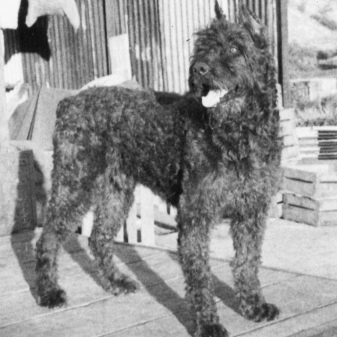
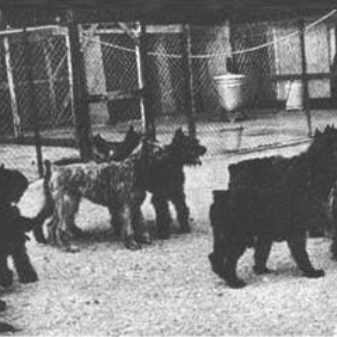
The eyes are oval, the pupils are brown. Auricles are placed high, the dog stands out with its excellent hearing, catching the slightest movement. For the breed partial cupping is permissible, which will allow the shells to form a triangle with a sharp end. The neck of the dogs is large, with a well-developed muscle corset. When looking at the body of the Flanders Bouvier, a slight deflection can be seen from the side. The chest stands out for its width, descends to the elbow bend. The line of a stomach is tightened.
The legs are set wide and straight, the skeleton is strong, the muscular corset is perfectly visualized on the hind legs, the reed is wide and strong, the metatarsus is short and there is a plumb line. Toes are long, tightly pressed to each other. Pillows and claws are pigmented, painted black. The tail of the dogs is placed high, smoothly passes into the spine, it can also be stopped, leaving no more than 3 vertebrae.
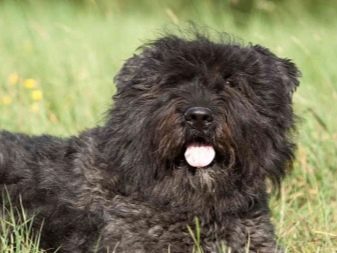
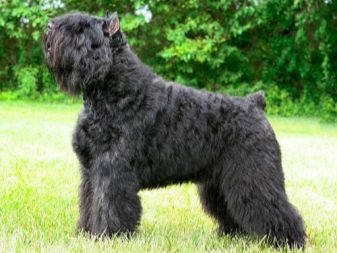
The coat is coarse to the touch, the outer pile has a kink, the undercoat will be softer than the bulk. On the muzzle, the hair is long. The following types of dog colors are acceptable:
- plain black;
- plain gray;
- "Salt with pepper";
- brindle;
- pale yellow.
The presence of spots is considered a Bouvier deviation from the standards.
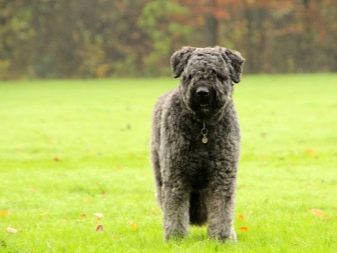
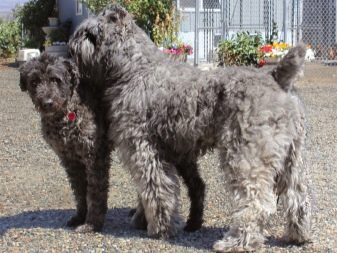
Dogs of this breed live on average 10-13 years, which is good for large animals. Some representatives of the Flanders Shepherd Dog may suffer from congenital diseases. Among them, it is worth highlighting the most characteristic ailments concerning large dogs:
- joint dysplasia;
- glaucoma;
- heart murmur;
- thyroid problems.

Advantages and disadvantages
There are different opinions among dog breeders of this breed regarding the positive and negative characteristics of pets. Among the advantages, according to descriptions and reviews, it is worth noting the following characteristics of the Flanders Bouvier:
- friendly attitude to the person, including young children;
- balanced psyche;
- good security instincts;
- developed intelligence;
- good health.
The minuses include the following animal qualities:
- activity of dogs, which must be given a way out, guiding in the right direction;
- the need for regular and lengthy training, which for some breeders can be a problem.
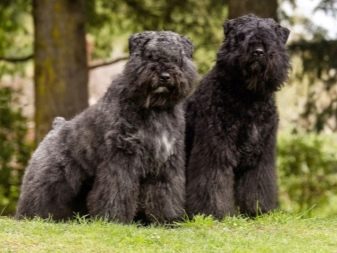
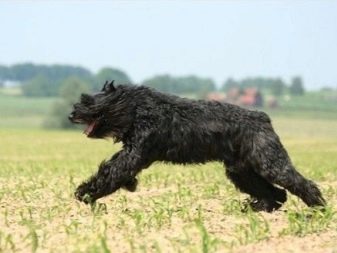
Character Features
The dogs still have pronounced guard instincts, so the dog may be wary of strangers, but without unnecessary aggression. With timely and proper upbringing, Bouvier can demonstrate courtesy and tolerance towards strangers who come to the house. The innate instincts of dogs will require early socialization for acquired puppies.
Procrastination in this case can lead to the development of aggression and anger in a dog towards a person. Shepherd dogs are not inclined to rush into a fight right away, but they will surely warn the stranger and the owner of the danger with a voice.
Dogs quickly find a common language with children. If the animal and the child grow together, a strong friendship will surely arise between them.
However, in relation to unfamiliar children, such a favor from Bouvier should not be expected.
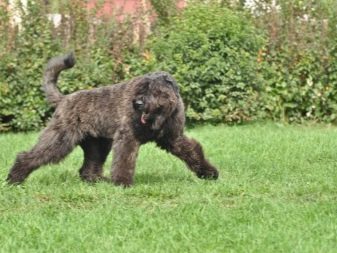
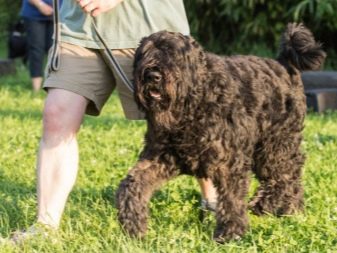
With dogs of other breeds, the shepherd has a complex relationship. If the breeder has a desire to have several pets, it is best to make heterosexual four-legged friends, but of the same breed.The instinct of dominance is expressed in dogs, and it manifests itself in males and bitches to the same extent, which can turn into situations related to the struggle for leadership in the house. With early socialization, this will be avoided.
It is not recommended to start small rodents and other pets together with Bouvier, since the dog can treat them like prey. However, there are frequent cases when puppies of the Flanders Bouvier, who grew up in the same house with a cat, got used to them without showing life-threatening second animal instincts.
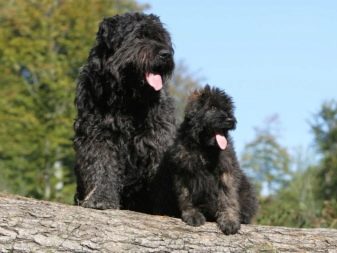
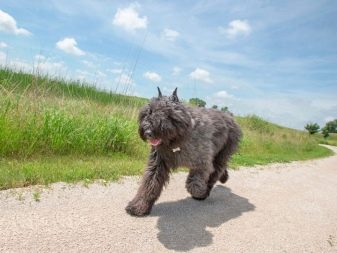
Content Rules
Animals do not require any special conditions when kept, however, it is preferable that the dog grow up in a private house. If this option is not possible, then, subject to regular and long walks, the dog will feel fine in the apartment. With the proper level of physical activity in a confined space, the pet will demonstrate restrained behavior.
If the dog will live in the yard, then for her it is worth building a comfortable booth. One should not leave the shepherd alone in the apartment for a long time, as the pet will certainly begin to get bored. Such dogs need live communication with their “pack”. Puppies of this breed should be walked as often as possible, due to innate stamina they will not be so tired of playing in the fresh air, like dogs of other breeds.
Among the necessary care measures, special attention should be paid to Bouvier wool. For a well-groomed appearance, the wool should undergo regular stripping procedures that will give the contours of the animal's body the correct outlines. However, it is not recommended to remove the length too much even in the summer months, as this will disrupt the natural processes of growth and the formation of the exterior.
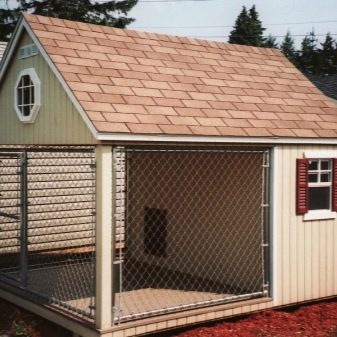
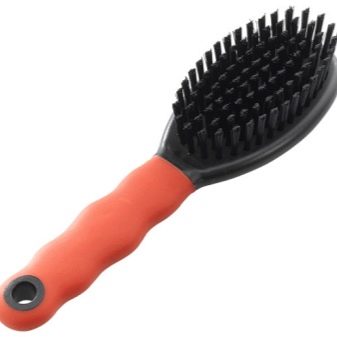
The owner of the Flanders shepherd will need regularly comb your pet, accustoming to this procedure from a very young age. Dogs are bathed as necessary, as a rule, one water procedure per year will be enough. If some areas are too dirty, they can be cleaned with a wet towel. For swimming, it is worth using special shampoos and conditioners.
Attention will require the eyes and ears of the dog, which should be examined regularly to exclude inflammatory processes and the presence of skin parasites. Also, the Bouvier owner will need to trim the dog's claws. Only an overgrown plate is subject to removal; these manipulations should be carried out with extreme caution so as not to injure the vessels located near by carelessness. It is necessary to walk the dog at least 2 times a day, with a duration of one walk at least one hour.
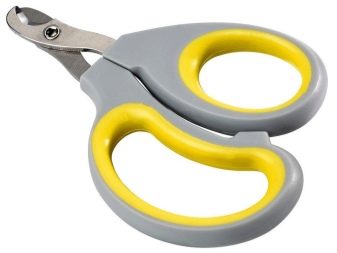
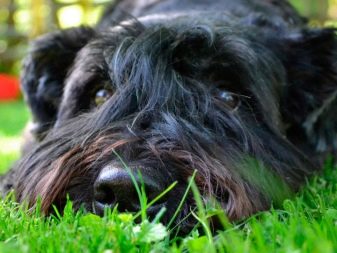
While in the fresh air with a pet, you should not only play, but also engage in training.
The Flanders Bouvier will need to get all the necessary vaccinations. Vaccination will avoid the following diseases:
- plague;
- parvovirus enteritis;
- parainfluenza;
- leptospirosis;
- coronavirus;
- infectious hepatitis.
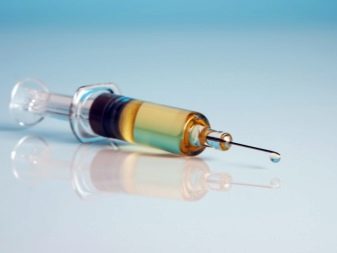
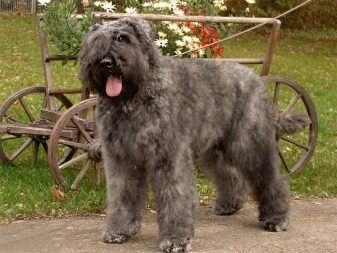
How and what to feed?
It is allowed to feed animals with dog food for industrial production or with natural food. However, in the latter option, it is extremely important to provide the pet with all the necessary vitamins and minerals. The basis of the diet should always be the meat component, to a lesser extent - offal. Also, dogs should additionally be given complex vitamin supplements, which can be purchased at veterinary pharmacies.
In Europe, they prefer to feed dry flanders bouvier not lower than premium class. Industrial feeds must be selected based on the age and size of the animal, so that the chemical composition of the product allows the pet to replenish the supply of necessary vitamins.
For the breed, a mixed diet option is also suitable, but dry croquettes must be alternated with natural products without offering them at one meal.Since the features of the animal are the presence of a mustache and beard, after each feeding the dog’s face will have to be washed or wiped with a damp towel. The frequency and regularity of meals will directly depend on the age of the dog.
So puppies of the frandre shepherd should be fed at least 5 times a day, up to six months, after 6 months, the frequency of feeding can be reduced gradually, removing 1-2 meals. After a year, the pet must be transferred to two meals a day - in the morning and in the evening.

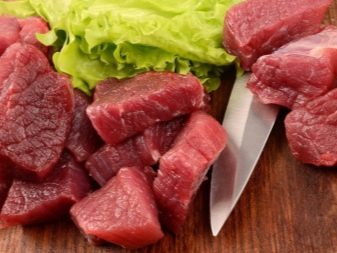
The following foods will be banned for animals:
- bakery products;
- sweets;
- pickles and smoked meats;
- canned food and convenience foods;
- tubular bones;
- various flavor enhancers.
Among the cereals for the breed will be suitable:
- oat groats;
- buckwheat;
- fig.
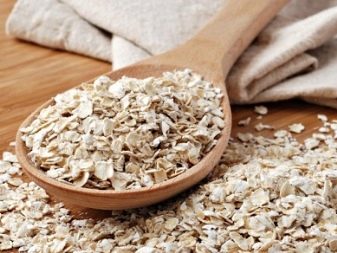
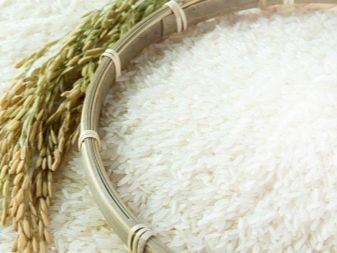
You should refrain from introducing potatoes to the dog’s diet. The remaining vegetables will be useful for the pet. In addition, the shepherd should regularly receive eggs, fish, dairy products and even fruits. It is believed that the optimal amount of food for a dog will be about 40-50 grams per kilogram of live weight of a pet at a young age. For adult animals, the established norm is allowed to be reduced by half.
According to dog handlers, when transferring a pet from one type of feed to another everything should be done gradually, especially after acquiring a small dog. However, Bouvier must be accustomed to the dietary regimen from early childhood.
The breed does not have allergic reactions to food, but it is recommended to refrain from introducing preservatives and other chemicals.
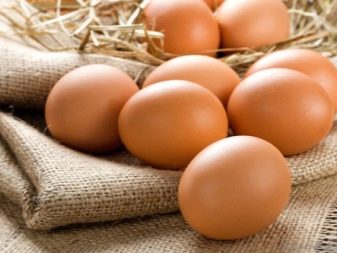

Training
The breed, by virtue of the inherited qualities from its ancestors, is considered enduring, therefore, the dog should not only exercise during the games and walks, but also in the learning process. In addition to physical endurance, Bouvier has a rather strong character, therefore only breeders who show their strong temper in training, but without physical and psychological violence, will achieve positive results from training.
Animals will feel good next to the breeder, so even in the process of training with dog handlers, the bouvier owner is advised to be near his pet. The dog often shows its independence and stubbornness when training. In this case, the training must be built on endurance and patience on the part of man. It is advised to start training the working breed as early as possible so that the dog initially recognizes the "leader" in the owner. With Flanders Bouvier, you can arrange half-hour runs, the dog can become a companion for cycling.
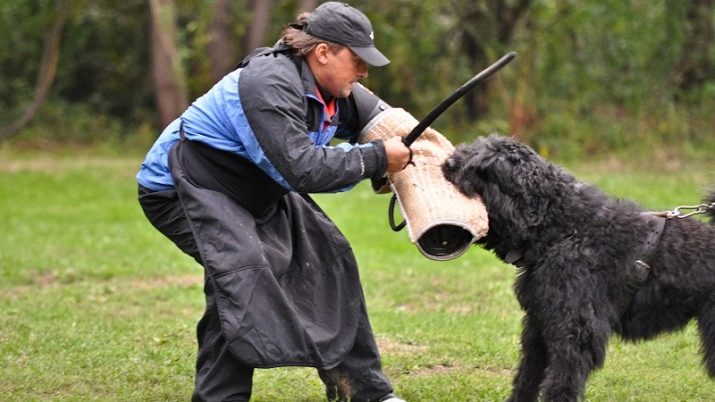
In the next video you will find interesting facts about the breed Flanders Bouvier.
